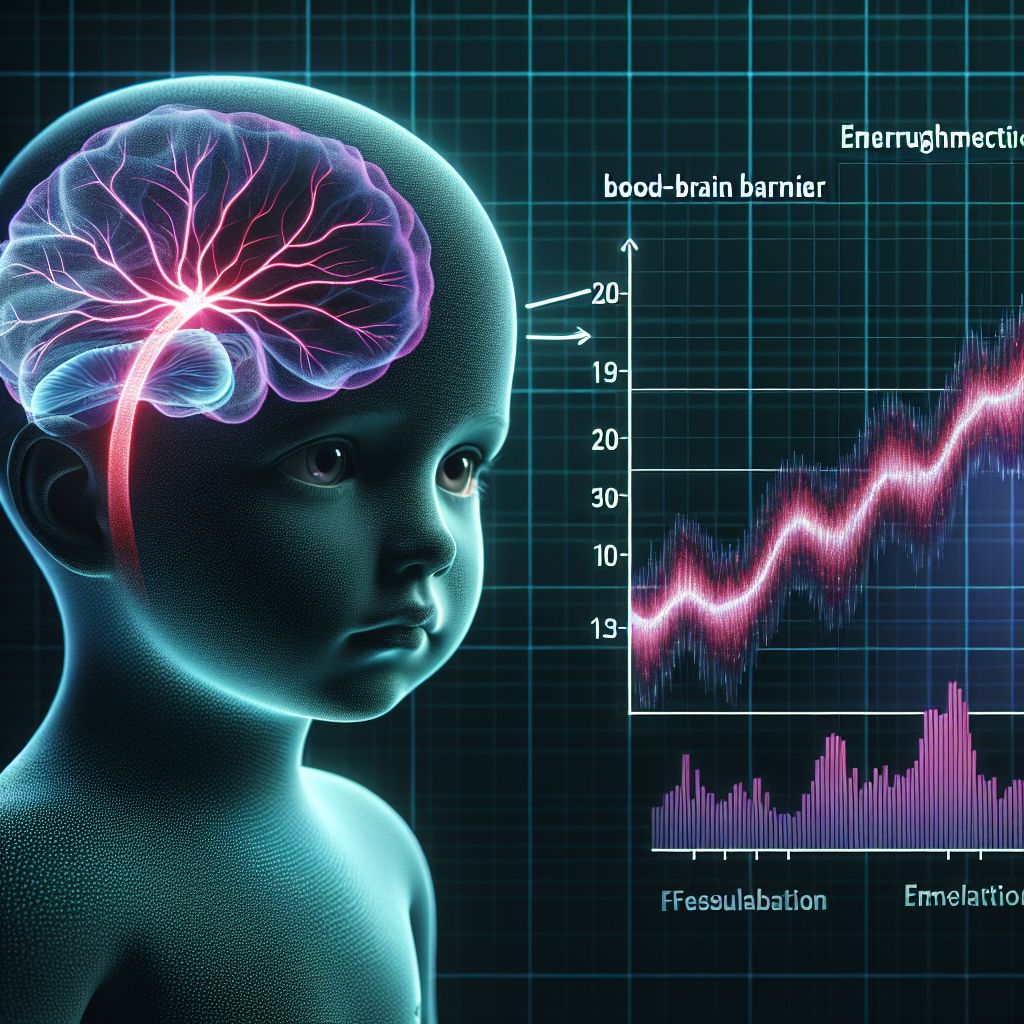As a physician deeply invested in the well-being of children, I’ve come to realize that one of the most pressing yet overlooked threats to their development is something invisible and pervasive: electromagnetic fields, or EMFs. With the proliferation of electronic devices, Wi-Fi routers, and even high-voltage power lines, our children’s brains are being exposed to an environment quite different from what previous generations experienced. And while this topic may seem technical, it’s crucial for us to grasp its implications for the sake of our children’s futures.
Key Takeaways
-
Children’s developing brains are particularly vulnerable to the potential risks posed by EMFs.
-
Research suggests a link between prenatal EMF exposure and the risk of conditions like autism and impaired brain development.
-
EMFs can compromise the blood-brain barrier, which is essential for protecting the brain from harmful substances.
-
Mitochondrial function, critical for brain energy, may be adversely affected by EMF exposure.
-
It’s important to recognize everyday items as potential EMF sources and to take proactive measures to reduce exposure.

Understanding the Risks of EMF Exposure During Pregnancy
During pregnancy, the developing fetus is incredibly sensitive to environmental influences. This is a time when the foundational structures of the brain and nervous system are being laid down. Because of this, expectant mothers need to be particularly mindful of their EMF exposure. Studies have shown that high levels of EMF exposure during pregnancy can lead to an increased risk of miscarriage, birth defects, and even conditions such as autism and obesity in their children. So if this damage can happen inside the womb do you think there is risk after the baby is born? Of course there is. Unfortunately nobody is doing serious research on this subject but there is a lot of industry sponsored reassuring talk.
Risk of Autism and Prenatal EMF Exposure
Autism Spectrum Disorder (ASD) is a complex neurological condition that affects many children. A growing body of research suggests a connection between prenatal exposure to EMFs and an increased likelihood of ASD. While the exact mechanisms are still being explored, it’s clear that limiting EMF exposure during these critical periods of brain development could be a significant step in safeguarding the health of unborn children.
How EMF Affects Fetal Brain Development
The fetal brain is particularly susceptible to EMF exposure. Animal studies have indicated that prenatal exposure to EMFs can result in changes to the developing brain, including alterations in the number of neurons and their function. These findings are concerning because they suggest that EMF exposure could potentially disrupt the intricate process of brain development in humans as well.
Protective Measures for Expectant Mothers
-
Avoid carrying mobile phones directly on the body and instead, use them at a distance with the speakerphone function or a hands-free kit.
-
Limit the use of Wi-Fi and other wireless devices by turning them off when not in use, especially during sleep.
-
Be mindful of the location of household appliances and try to maintain a safe distance from sources of EMFs.
-
If you work in an office or you have exposure at home, get a blanket with faraday shield properties and drape it over your abdomen to shield the baby.
The Blood-Brain Barrier: Understanding Its Function and Vulnerability to EMF
The blood-brain barrier (BBB) is a selective barrier that shields the brain from potentially harmful substances circulating in the blood. It’s a crucial line of defense for maintaining brain health and function. However, research has suggested that EMFs may impact the integrity of the BBB, making it more permeable and potentially allowing unwanted substances to enter the brain.
How EMF Compromises the Blood-Brain Barrier
Studies on animals have demonstrated that exposure to EMFs can lead to increased permeability of the BBB. This could have long-term consequences on brain health, potentially leading to neurological disorders. Most importantly, these effects are not just limited to adults; children’s developing brains might be even more susceptible to these changes.
The Role of the Blood-Brain Barrier in Brain Protection
The BBB is not just a physical barrier; it’s a dynamic interface that actively transports nutrients to the brain while keeping out toxins. It’s essential for the normal functioning of the brain, and any disruption to this delicate balance can have profound effects on a child’s cognitive and neurological development.
Continuing from where we left off on the blood-brain barrier, let’s delve into the long-term implications of its potential damage due to EMF exposure. If the barrier is compromised, children could face an increased risk of neurological conditions as their brains may become exposed to neurotoxins and other harmful agents that would normally be filtered out. This is particularly troubling when we consider how essential a fully functioning brain is for learning, memory, and behavior during the critical years of development.
Long-term exposure to EMFs can lead to chronic health issues. For instance, oxidative stress, a condition in which damaging free radicals overwhelm the body’s antioxidants, is one possible outcome. This can lead to inflammation and damage within the brain, affecting everything from cognitive function to mood regulation.
Energy Production in the Brain: Mitochondria at Risk from EMF
Our brains are energy-intensive organs, with mitochondria supplying the necessary power to keep them functioning optimally. These tiny powerhouses within our cells are responsible for producing over 90% of the energy our bodies need. But what happens when they’re subjected to the constant bombardment of EMFs?
EMF Effects on Mitochondrial Function and Brain Energy
Research indicates that EMFs can negatively impact mitochondrial function, potentially leading to a decrease in energy production. For children, whose brains are still developing and require a lot of energy, this could translate into a variety of developmental and behavioral issues. It’s like trying to run a computer on a weak battery; eventually, performance is going to suffer.
Supporting Brain Health: Enhancing Mitochondrial Resilience
-
Encourage a diet rich in antioxidants to combat oxidative stress.
-
Promote regular physical activity, which has been shown to boost mitochondrial function.
-
Ensure children get ample sleep, as this is when the body repairs itself, including the mitochondria. And when they are sleeping that the main EMF sources in the house are “off”.
Assessing the Impact of EMF on Cellular Energy Production
We must be vigilant in observing our children for signs of fatigue, difficulty concentrating, or other symptoms that could indicate compromised mitochondrial function. If you notice such changes, it could be worthwhile to assess their EMF exposure and take steps to mitigate it.
A World of EMF: Identifying Various Sources Beyond Cell Phones
When we think of EMFs, our minds often jump to cell phones. However, our children are surrounded by a myriad of EMF sources, many of which we might not immediately recognize.
Household Items and Appliances as EMF Sources
Common household items such as cordless phones, baby monitors, and even electric blankets emit EMFs. While it’s not practical to eliminate all exposure, being aware of these sources allows us to make informed decisions about their placement and use in our homes.
Wireless Technology and Its Contribution to EMF Pollution
Wireless technology, while convenient, contributes significantly to the EMF load in our environment. Wi-Fi routers, for example, are a constant source of EMF radiation. To reduce exposure, consider turning off the router at night or when not in use, especially in homes with small children.
Solar Farms and the Question of EMF Exposure
Renewable energy sources like solar farms are becoming more prevalent, but there are questions about their EMF emissions. While generally considered safe, it’s a reminder that EMFs are not just an indoor concern and that we need to be mindful of our environment as a whole.
FAQ
How can expectant mothers protect themselves and their unborn babies from EMF?
Expectant mothers can take steps such as using wired internet connections instead of Wi-Fi, keeping electronic devices out of the bedroom, and using protective shielding products designed to block EMF radiation.
What are the symptoms of a damaged blood-brain barrier?
Symptoms can include cognitive difficulties, headaches, and increased susceptibility to infections. However, these symptoms can be indicative of many conditions, so it’s important to consult with a healthcare professional for an accurate diagnosis. Brain fog is a common symptom in all age groups.
What measures can be taken to support mitochondrial health in the face of EMF exposure?
In addition to reducing EMF exposure, supporting mitochondrial health can involve nutritional support through a diet rich in whole foods, antioxidants, and omega-3 fatty acids, as well as ensuring adequate sleep and exercise.
Are there any appliances or devices that people would be surprised to learn emit EMF?
Many might be surprised to learn that even seemingly innocuous devices like electric toothbrushes, hair dryers, and induction cooktops can emit EMFs. It’s important to use these devices judiciously and not to have them on unnecessarily.
Is there a safe distance to maintain from solar farms to reduce EMF exposure?
While solar farms do emit EMFs, the levels typically decrease with distance. And it depends on where the DC current is changed to AC. It’s generally recommended to maintain a distance where you cannot directly see the panels to ensure minimal exposure.
The Role of the Blood-Brain Barrier in Brain Protection
The blood-brain barrier is our brain’s first line of defense against various toxins and pathogens that circulate in our bloodstream. This semi-permeable membrane allows essential nutrients to pass through while blocking harmful substances. It’s a crucial part of our neural health, especially for children whose brains are in a critical phase of growth and development.
Imagine the blood-brain barrier like the security gate of a fortified castle. It scrutinizes everything that tries to enter, ensuring that only the friendly and necessary substances get through. This selectivity is vital for maintaining the brain’s internal environment and allowing it to function correctly.
Long-Term Implications of Blood-Brain Barrier Damage
When the blood-brain barrier is compromised, it’s like the castle gates have been left open. Unwanted guests can stroll in unchecked, potentially causing a range of issues from inflammation to neuron damage. For children, whose brains are still developing, this can lead to long-term cognitive and behavioral problems. It’s essential that we protect this barrier, much like we would protect the walls of our homes from cracks and damages. By the way, EMF is not the only thing that compromises this barrier. Glyphosate, a pervasive herbicide on 80% of the food in the grocery store also does. But that’s another story. . .
Stanley Lang, M.D. has been in active medical practice since 1978. He has been a family physician during these years with detailed experience in all age groups including delivering babies for several years. He has been a pioneer in developing models of wholistic health care that bring health to the whole person. He has particularly focussed on reversing Chronic Stress effects on the body. He is the creator of the Shalom Method for Wholistic Health, and he has created several online programs that allow patients to naturally self manage their problems including “The Natural Lyme disease Treatment Program”, the “Menopause Balancing Program”, “The Happy Healthy Child” program plus many others.



